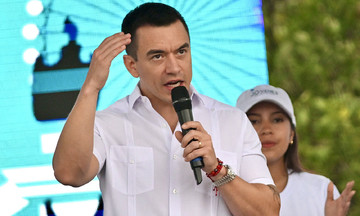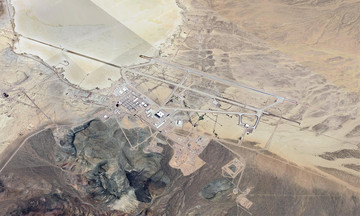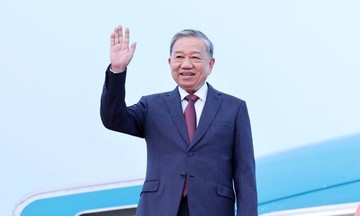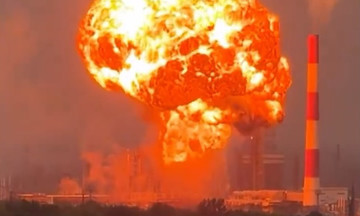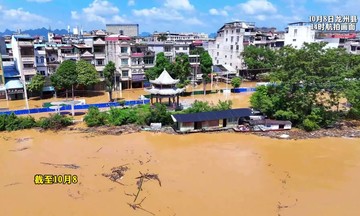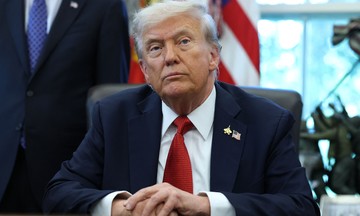North Korea's Korean Central News Agency (KCNA) reported today that the Missile Bureau and the Chemical Materials Institute conducted a ground test of a new-generation solid-fuel engine made of carbon fiber composite material. The engine achieved approximately 200 tons of thrust, surpassing previous North Korean rocket engines.
This was the 9th and final ground test for this engine model.
North Korean leader Kim Jong-un personally observed the event, calling it the "most strategically significant success" in Pyongyang's defense modernization efforts. He also stated that the test marked a "remarkable change" in strengthening and expanding the country's strategic nuclear forces.
 |
Kim Jong-un observes the missile engine test on 8/9. Photo: KCNA |
Kim Jong-un observes the missile engine test on 8/9. Photo: KCNA
Kim previously visited the research institute responsible for developing the new engine. State media reported that the engine will be used for the Hwasong-19 and Hwasong-20 intercontinental ballistic missiles (ICBMs).
This is the first time North Korea has announced the development of a new-generation ICBM since the Hwasong-19 test launch in late October 2024. Other than the engine's thrust, the Hwasong-20's specifications remain undisclosed.
In last year's launch, the Hwasong-19 reached a maximum altitude of 7,687.5 km and traveled 1,001 km in 1 hour 25 minutes and 56 seconds before landing in a designated area in the waters east of the Korean peninsula. This was Pyongyang's longest ICBM flight time to date.
In recent years, North Korea has tested various ICBMs with estimated ranges covering the entire US, including some solid-fuel models. Solid-fuel missiles are highly mobile, easier to conceal, and much faster to deploy than liquid-fuel missiles.
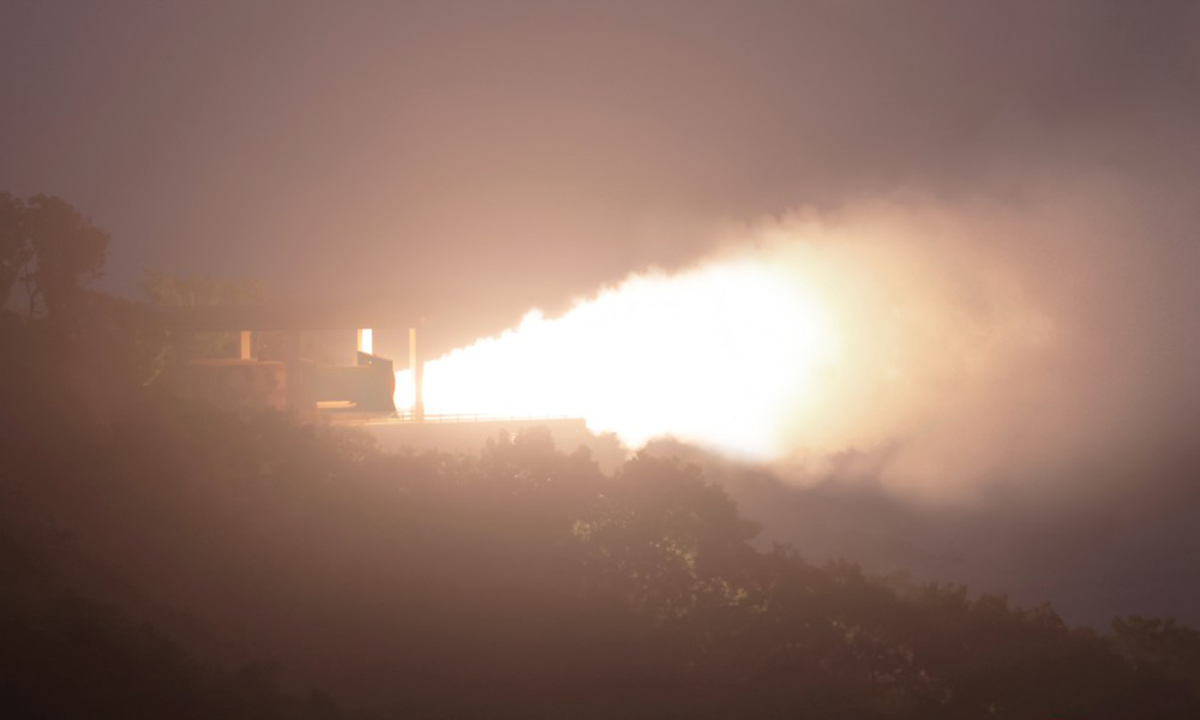 |
Flames erupt from the missile engine test on 8/9. Photo: KCNA |
Flames erupt from the missile engine test on 8/9. Photo: KCNA
Kim has called for strengthening North Korea's long-range strike capabilities, including developing missiles capable of carrying multiple warheads to increase their ability to penetrate enemy air defenses. However, South Korean and Western experts believe Pyongyang has not yet mastered the technology needed to ensure the warheads can withstand the heat and pressure of re-entry.
North Korea has increased its missile testing since nuclear talks with the US stalled in 2019. Observers suggest Kim aims to pressure the US to accept North Korea as a nuclear power and improve his negotiating position for economic and security concessions.
Pham Giang (According to KCNA, AP)



